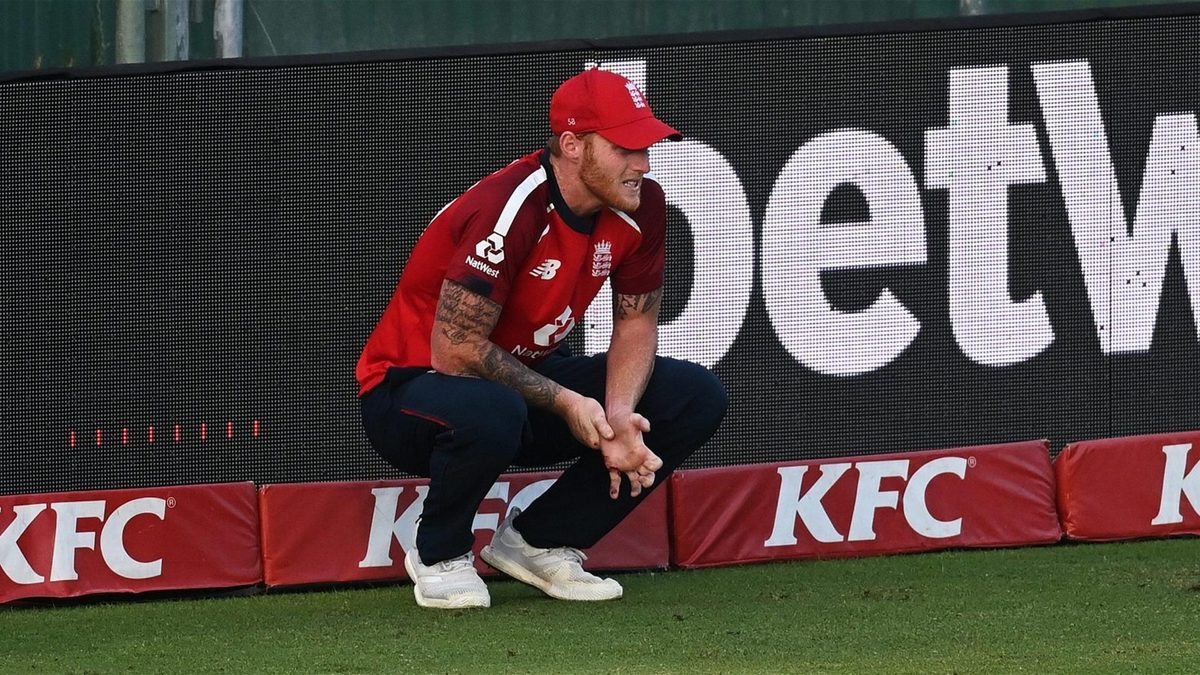
Ben Gardner examines England’s unlikely struggle of trying to fit Ben Stokes, their greatest modern all-rounder, into their T20I side.
Subscribe to the Wisden Cricket YouTube channel for post-match awards, player interviews, analysis and much more.
Watching Ben Stokes bat in the second T20I was a frustrating experience, though surely not as much as it must have been for the man himself. On a sluggish pitch against an attack who had figured out how to use it, Stokes managed just one boundary in an exhausting 21-ball 24, swinging himself off his feet for precious little reward.
Right from the start, he was trying things, charging at Bhuvneshwar Kumar and missing from his third ball. There was another charge and miss at Hardik Pandya, a misread slower bouncer that Stokes was comically early on, the ball hitting his bat when he’d essentially finished his stroke and almost trickling onto the stumps, attempted scoops and finally a toe-ended slog which found Pandya at long-on.
On a pitch that few batsmen succeeded on in a game now long gone, it would hardly merit remark, except that it largely summed up Stokes’ T20I career so far. He has now batted 10 times at No.6 for England, more than he has at any other spot in the order, and averages just 10.55 at a strike-rate of 128.37 in the position.
His overall T20I record is only slightly better – Stokes averages 19.10 and strikes at 132.63 – and while his status as one of England’s greatest cricketers means he is almost beyond reproach, it’s fair enough to wonder if he actually warrants a spot in England’s best T20 side. As it stands, he is batting little in a role in which he seems unsuited, and not hugely making up for it with the ball. Stokes averages just over two overs a game, with an average nearing 40 and an economy rate of 8.78 runs per over.
There is evidence that there’s a top-class T20 player in there, struggling to get out. He was the MVP in the 2017 IPL, a clutch of match-turning moments backed up by an impressive set of stats. But his best work as a T20 batsman has come up the order. In domestic T20 cricket he averages 34.79 at Nos.1-3, with a strike-rate of 145.27. Further down, both those figures drop, to 26.72 and 137.11 respectively.
That Stokes is a player who struggles to hit big from ball one might jar initially, considering the explosive exploits for which he has become known. However, these have largely come after a period of bedding in, most notably at Headingley in 2019, when the onslaught to end all onslaughts came off the back of making two runs from his first 66 balls.
It’s this factor that provides perhaps the most compelling argument for moving Jos Buttler from the opening role, since if you do that, everything in England’s line-up slots into place. Buttler is arguably England’s best finisher, and with Jason Roy opening with Stokes, Dawid Malan at three, Jonny Bairstow at four, and Eoin Morgan and Buttler to finish things off, everyone is in a role in which they have shown themselves capable.
The issue is that Buttler is also England’s best opener, and while there’s a bigger gap in quality between him and Stokes at No.6 than there is between him and Stokes as openers, there’s also a gap between how much Buttler can influence the game as an opener to the difference he can make further down.
That second T20I showed the dangers of having Stokes at No.6, especially with Buttler departing in the first over. But the alternative might have seen Buttler trying to rescue England from 120-4 with six overs to go, in a game where India cruised to 165. If Buttler succeeds as opener, you’d expect England to win. But there will be situations as finisher when the ask is simply too much. In any case, the third T20I, when Buttler smashed a 52-ball 83* on a pitch only Virat Kohli looked close to being in on probably settled the debate. Moving Buttler from opener would weaken a strength to help cover a weakness, the antithesis of how Morgan has set up this side; to aim as high as possible, and then go even bigger.
So what’s the solution? Well, there isn’t a simple one. Liam Livingstone, say, might, in theory, be a more capable finisher but England aren’t going to drop Stokes because, well, he’s Stokes. But they also can’t afford to build the team around him, meaning we might well get more innings like Sunday’s, in which a titan is cut down to size trying to do something for which he is unsuited. The hope is that he improves in the role while doing so.
There are ways to mitigate this. There would be no shame if, when faced with a last-over thrash, Sam Curran or even Jofra Archer were asked to swing for the fences ahead of Stokes, with both having demonstrated early-innings muscle in the IPL. Equally, while there might not be a position for Stokes opening in England’s side, should a new-ball wicket or two fall, there’s no reason he couldn’t be an emergency promotion, a sort of floating firefighter to negate an early onslaught and then thrive.
It’s that last proposition that gets closest to what Stokes value to England’s T20 side might be, which is, well, being Stokes and standing up when England need him most. His Test and ODI records with the bat are both unremarkable, and yet it was him at the front of England’s two greatest victories of modern times in each format.
He is, by the formbook, not an exceptional T20 No.6 or bowler. And yet, come the T20 World Cup final, if England are four down early on or desperately need to break a partnership, there’s surely no one else you’d rather see coming into the action, numbers be damned.








